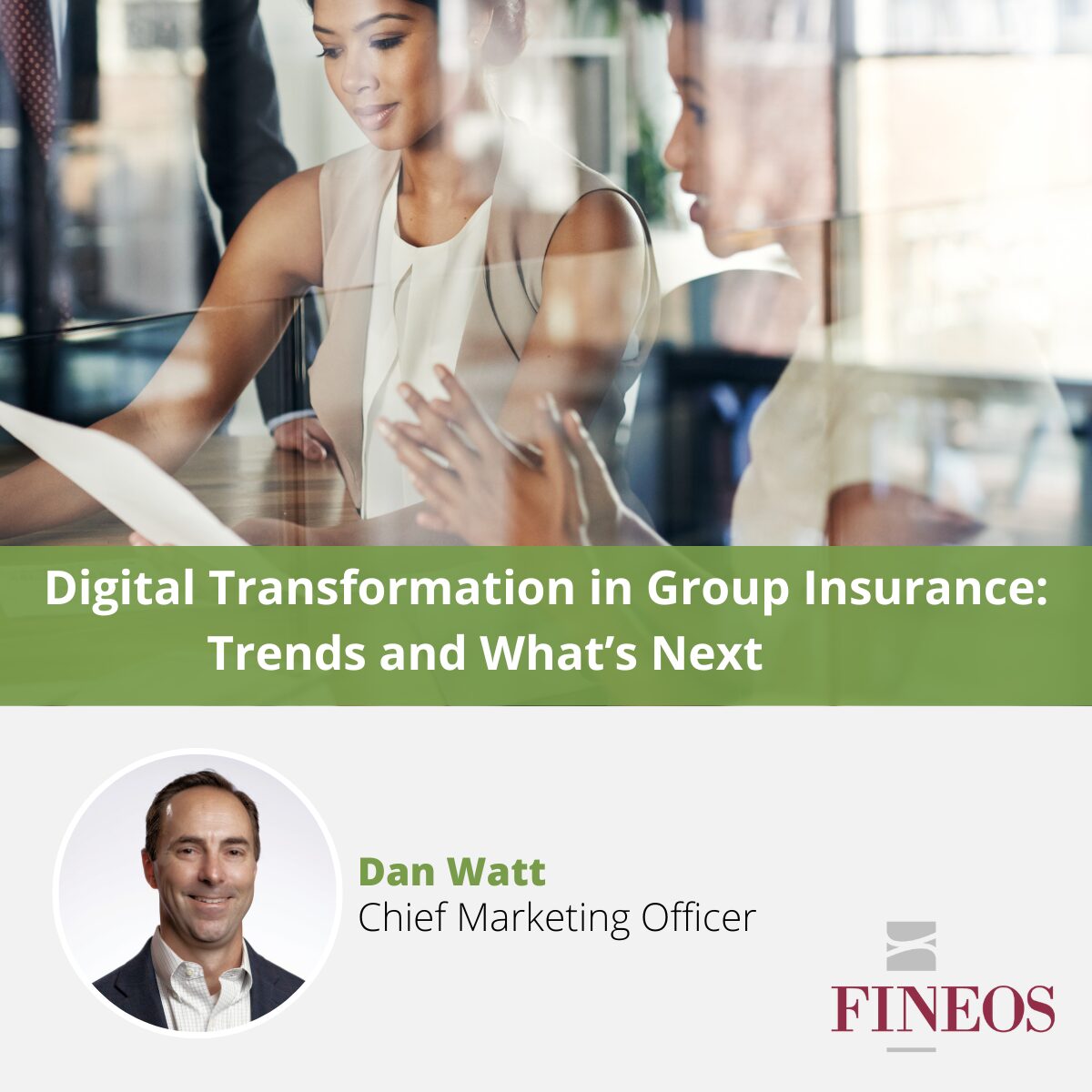What is the way forward?
In this blog series, I’ve talked about the need for Life and Health insurers to address digital service and some of the challenges we face. In this blog, part three, I’ll focus on some of the ways our customers have made progress.
Take one step at a time
While we do need a digital service strategy, it can be easy to get stuck in analysis paralysis. You need to see results in a reasonable timeframe, but you should take it in phases and learn through each iteration. Take a business process or client group and model that customer experience. A lot can be achieved with digital capture and communications supported by straight-through / rules-based processing, which is an old technique in insurance, but still a good one. Get started!
Automated email and text messages can help keep client communication strong and consistent while processing longer transactions (e.g. collecting information from third parties). We can integrate them into our workflow so we don’t have to rely on people to remember to do them manually, which inevitably can create communication gaps and inconsistencies.
Whichever process or client group we choose, we want to delight those customers and make them advocates. We want them to tweet about us and to post on Facebook about what a great customer experience they have had with us, to embellish our reputation and show the value being delivered to internal stakeholders.
Then, roll in additional lines and processes incrementally so we’re constantly fine-tuning and improving the experience. You can’t run a digital service project and consider it done. Nor can it be a blank check of continuous spending. We need short, controlled phases delivering value incrementally.
Consolidate business lines onto one platform
While we need to deliver value iteratively, we also need to look at our core systems and administration to start to address the fragmentation in IT and administration.
While core system transformation can be a big endeavour, there’s a huge payoff if done well. It’s an investment in data quality, customer service, and a reduction in administration cost and complexity.
It can also be done incrementally, focusing on specific product or client cohorts. It’s important, of course, that you select the right destination platform; one pre-configured for the products you’re addressing, one that includes digital service capabilities, and ideally one that is in the cloud, speeding up implementation time and lowering cost of ownership.
While we need phasing that delivers value in the short term, it must be part of a larger strategy to ensure we deliver on the broader transformation. Like any agile project, the first phases are worked out in more detail with later phases getting less analysis. This is important so we can get started and deliver results, while still tracking toward a destination which can inspire the organisation to change.
We also need to look at the business case beyond cost, particularly costs focused on administration improvements. We need to look further; to think of our reputation, our service quality, and our flexibility as an organization. We need a business case that better understands the value of digital service.
Buy before build, even for customer-facing systems
Buy before build is a vital consideration, even for customer-facing systems. Sure, the user experience of your customers must be aligned to your brand and market. But that can be a thin layer. It’s not a good enough reason for building your whole portal experience from scratch, in-house. A good option is to look toward core systems with integrated portals. It reduces that cost of ownership. It allows you to invest your time and money into differentiating your customer experience rather than re-creating basic capabilities.
Of course, when you buy, you also get a community who are investing their ideas, time, and money into that product, more than you could do on your own. This pays off in the short term with a quicker implementation and in the longer term as the product improves without you having to invest time and money in every step.
This is only true if the product is aligned to your business. If it has to be significantly customised, it’s essentially an in-house build under another name. This negates the advantages while building dependency – possibly the worst of both worlds. During the lifetime of the system, new product features are then not aligned to your business need which further negates the value.
Leverage predictive analytics and AI
One of the most compelling opportunities with digital service is through leveraging predictive analytics and AI. While human intelligence still trumps AI, there are several key advantages of machine approaches that can be leveraged right now.
One is speed. Inevitably it can take some time for a person to access an incoming request, while AI can be triggered at the time the request is being made on your portal, 24×7. This gives you a valuable opportunity to interact with the customer, whether it’s something simple like missing information or more complex like determining eligibility.
Another is the cost and scarcity of human expertise. While lower costs are a benefit in their own right, often deploying your resources in the best possible way delivers more value than simple cost savings – especially in claims. Many of our clients have delivered enormous value by predicting which claims are most open to expert intervention and focusing their most experienced people on those claims. There are admin savings here, but more than anything the reduction of leakage and improvement in return to work are the big wins.
Predictive analytics and AI are a big topic in themselves, but the point I’m trying to make here is that good digital service foundations give you the opportunity to leverage these technologies. As a result, digital service is a gateway to leveraging AI and, in future, will likely differentiate those organisations that can leverage AI from those that can’t.
How can FINEOS help?
In the final blog in this series I’ll talk about some of the ways FINEOS is helping our customers deliver on their digital service strategy and how we can help you leverage AI, whether you are a FINEOS customer or not.


